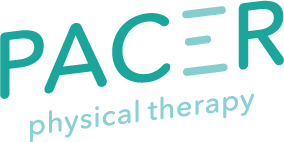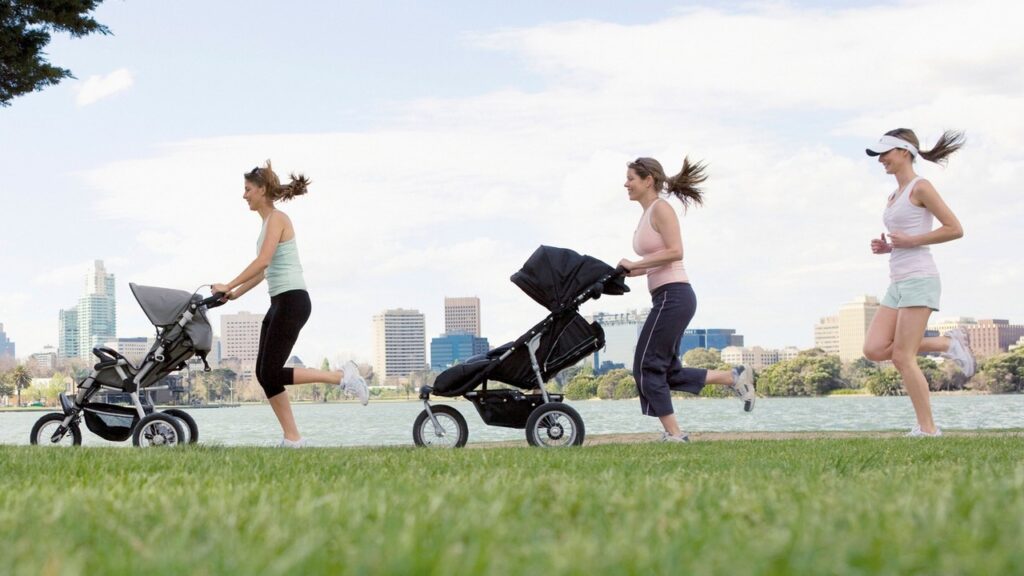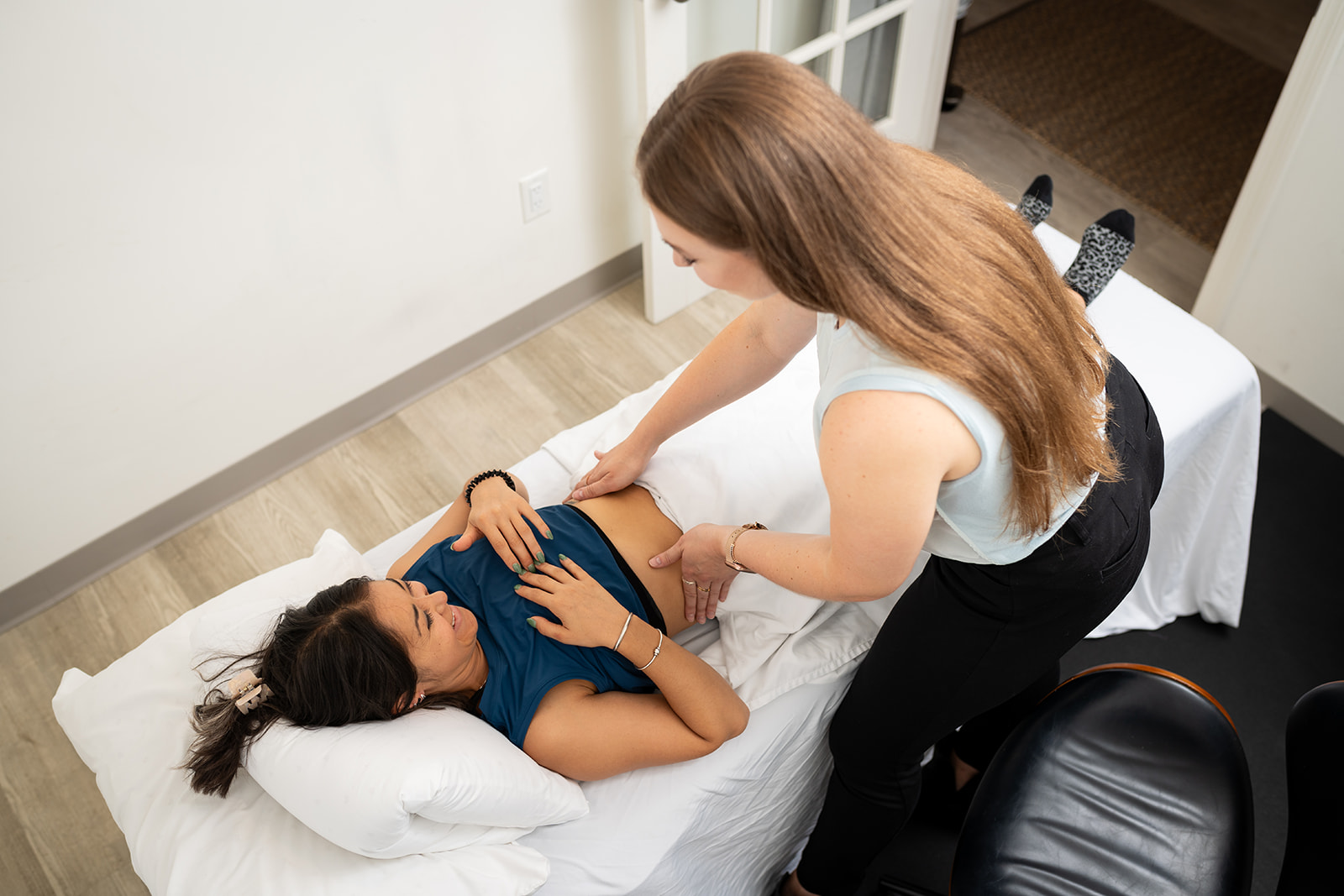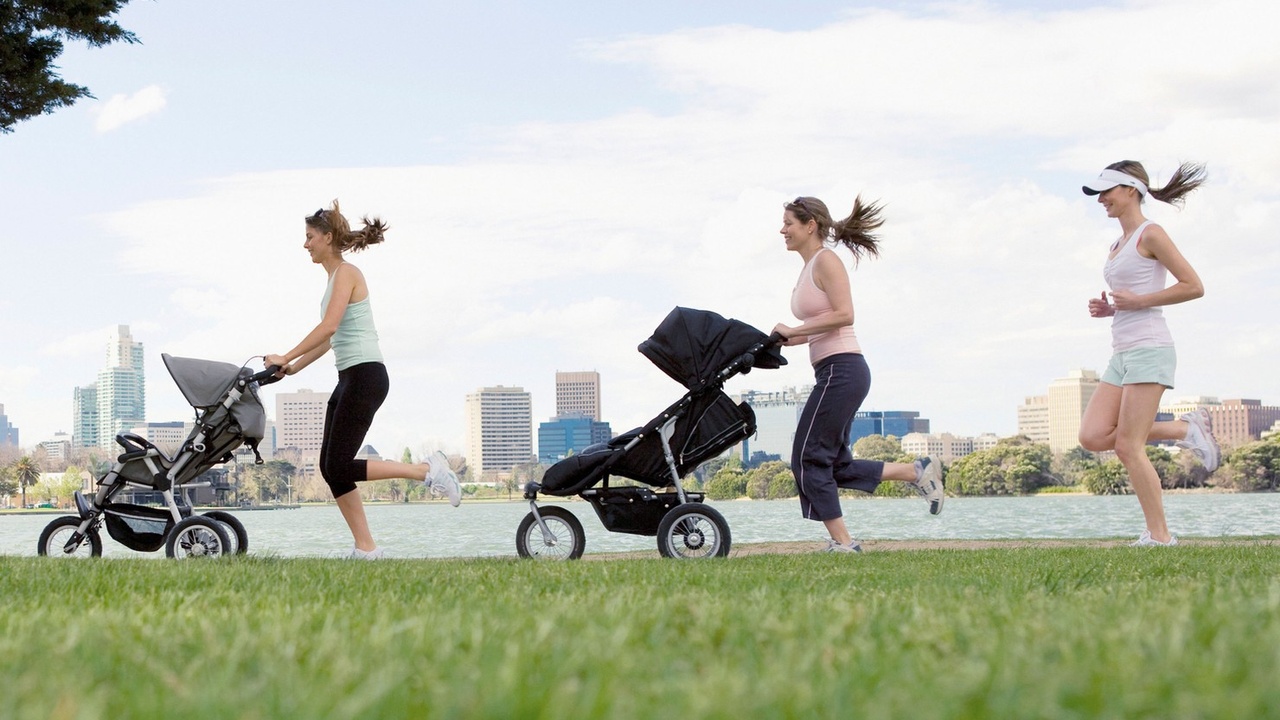Are you ready to return to running?! The baby is here, your body is feeling better when moving around, and after the first few weeks postpartum you may be thinking, when is the right time for me to hit the trails again.
Taking care of yourself so you can take care of your newborn is an essential part of your physical and mental health. I know it is difficult, but try not to guilt yourself out of that time to recover, even if it is for 10 minutes.
Remember having a baby is no small thing- the changes that occur to our bodies include (but not limited to):
- Diaphragm (major breathing muscle) gets pushed up into our rib cages and does not function properly
- Ribs spread which affects both the diaphragm and pelvic floor function
- Pelvic floor was under extra pressure from the growing baby
- Abdominals stretch out
- Back muscles overcompensate and tighten
No wonder why our postpartum healing timelines vary so much from one person to the next when returning running. Our bodies have changed, and that is OK.
When considering an appropriate time to return to running it is important to consider your birthing experience, if any tearing may have occurred, and how you delivered your baby (c-section, vaginal, etc). I highly recommend going into your 6-week postnatal check-up with a list of questions for your doctor, including an explanation of your fitness level prenatally, and your plan for what type of exercise you want to participate in postpartum. Also, be sure to talk to your doctor about how breastfeeding may play a role in returning to exercise.
After you are cleared to return to exercise, what else should you consider?
Here are the 5 Tips for Returning to Running Postpartum:
1) Seek an Assessment from a Women’s Health Pelvic Floor Physical Therapist
What does physical therapy do for you postpartum? Physical Therapists (PTs) are movement specialists and can help you learn about how your body has changed during pregnancy. They can explain what changes have occurred in your posture, how your center of gravity has changed, and how that can influence your balance. Did you know your pelvic muscles change length during pregnancy? A PT will help you improve imbalances that have occurred. They can help give you useful tips on how to MOVE as well as carry/lift your baby, and MUCH more!
This is often neglected by other health care providers and is not yet the standard of care, since most people think of referring patients to physical therapy only when they have PAIN!
YOU DO NOT NEED TO BE EXPERIENCING PAIN TO SEE A PHYSICAL THERAPIST POSTPARTUM!
Pregnancy is NOT a disability, but it is very much so like an injury to your body that you need to give time to heal and rehab.
Common things I hear from my clients include:
- My pelvic floor feels very sore or heavy after a workout, I am not sure if that is normal
- My ligaments feel looser and I feel like I have a hard time engaging core
- I should have permitted myself to heal before pushing it because I have a lifetime to push my body when it is ready
- I am leaking urine when carrying for my baby or when I cough, sneeze, or laugh
If this sounds like you and you are unsure, just know a physical therapist who specializes in pelvic health and postpartum recovery can help you answer some of these questions! Feel free to reach out and book a discovery call to discuss your concerns.
2) Establish Your Breath Again
As mentioned before, our diaphragm (major breathing muscle) moves up into our rib cage and allows for room for the baby in our abdominal cavity. Therefore, our diaphragm is much smaller and does not contract and relax to its full capacity.
You might have noticed in your second and third trimester, you were having difficulty breathing, or you felt short of breath doing things you usually do without any issues- including walking up the stairs.
Clients frequently ask me, “what can I do in my first weeks postpartum before being cleared by my doctor?”
BREATHING EXERCISES is a great place to start!- restoring the normal length of your diaphragm will set you up for success once you get back to running and will help to decrease shortness of breath with strength training and higher-impact activities like running.
To find out tips on how to do this, watch the video below.
3) Give your Body Time to Recover
Our bodies have physiological timelines that we can not speed up. What I mean by that is various tissues (muscles, ligaments, connective tissue) take time to heal after an event such as pregnancy. The recovery of the pelvic floor muscles, as well as the connective tissue, generally takes 4-6 months postnatally to fully recover. That ain’t nothing mommas! Your body will thank you for giving her time to recover.
Also, for any moms who have had a c-section; abdominal fascia usually takes around 6-7 months to get back to its original strength post-c-section! Not to fret! Get more info HERE.
4) Strength Training is KEY
You are doing everything right so far- taking the time you need to recover by slowly easing back into exercise, practicing your breathing, mastering your ability to exhale and inhale without compensations..
What’s next? Let’s focus on strength training!
Strength training in the postpartum period should start gradually with the pelvic floor and core. This is another reason why a pelvic floor PT would be a good option in your early postpartum period, so you know EXACTLY where to start and HOW to start.
Every mom is different and it is important you get the care your body needs to recover optimally and decrease your risk for injury.
5) Gradual Return to Running
In the most recent research, Tom Goom et. al talk about giving your body 12 full weeks to recover before even attempting running.
Common areas to monitor when returning to running are pelvic floor heaviness, dragging, or moderate to severe pain in the pelvic floor region. Pain 0/10-3/10 with no lasting pain into the next day is acceptable, but an increase in symptoms of incontinence which can include an increase in urgency to use the bathroom, difficulty using the bathroom and emptying your bladder, or leaking during a run is unacceptable. Therefore, monitor these symptoms before and during your early runs.
Also, consider a gradual return to running with no more than 10% of mileage increase a week. Including breaks in a run (walk-runs) can be helpful initially. Get cleared by a physical therapist who can perform a return to run screen by assessing muscle strength, mobility, and tissue tolerance to moderate to high impact activities such as running!
Okay mama, if you are feeling ready to start- feel free to contact me for a COMPLIMENTARY discovery call to get started!
Aren’t you tired of guessing what is the right and wrong exercise to do?
You got this!
Dr. Juliana
Sources:
1- Tom Goom, Grinne Donnelly, & Emma Brockwell. Returning to Running postnatal Guidelines for medical, health, and fitness professionals managing this population. Physios in Sports & Exercise Medicine. March 2019.
2- K Bo, R Artal, R Barakat, et al. Exercise and Pregnancy in recreational and elite athletes: 2016/2017 evidence summary from IOC expert group. Br J of Sports Medicine. 2018.






